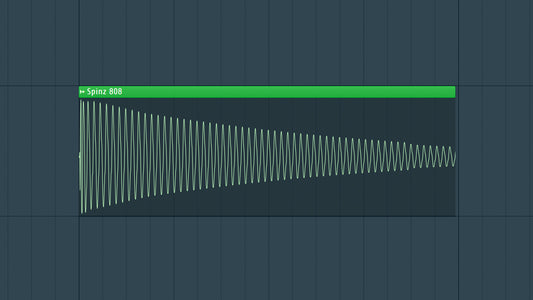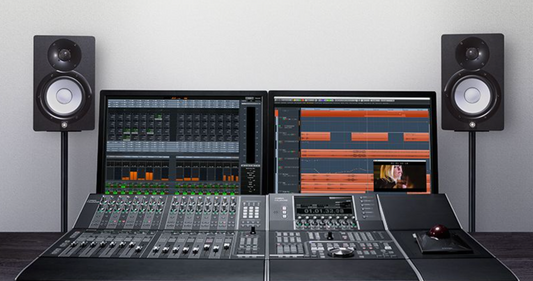Introduction
I have been producing music for over 15 years, so today I wanted to share with you the most important things that have helped me throughout my music career. Stepping into the realm of music production can be an exciting yet overwhelming endeavor for beginners. The world of digital audio workstations (DAWs), virtual instruments, and production techniques may seem like a vast landscape, but fear not – this beginner's guide aims to demystify the basics of music production and set you on the path to crafting your sonic creations.
DOWNLOAD 20+ FREE SAMPLE PACKS - CLICK HERE

1. Understanding the Basics:
What is Music Production?
Music production is the process of creating, recording, and manipulating sounds to produce a final musical piece. It involves a combination of composition, arrangement, recording, editing, and mixing.
2. Setting Up Your Workspace:
Choosing Your Digital Audio Workstation (DAW):
Selecting the right DAW is crucial. Popular choices include Ableton Live, FL Studio, Logic Pro, and GarageBand. Choose one that aligns with your preferences and budget.
Essential Gear:
At a minimum, you'll need a computer, headphones, and a MIDI controller. As you progress, you may consider adding studio monitors, an audio interface, and additional MIDI controllers.
3. Learning the Language:
Music Theory Basics:
While not mandatory, understanding basic music theory enhances your ability to compose and arrange. Familiarize yourself with concepts like scales, chords, and key signatures.
Digital Audio Basics:
Learn about digital audio terms such as bitrate, sample rate, and file formats. This knowledge ensures you produce high-quality recordings and understand your DAW's settings.
4. Exploring Virtual Instruments and Plugins:
Virtual Instruments:
Experiment with virtual instruments to create melodies, harmonies, and rhythms. Common ones include synthesizers, pianos, and drum machines.
Plugins:
Explore audio effects plugins such as EQ, reverb, and compression. These tools shape and enhance your sounds during the mixing process.
5. Getting Hands-On:
MIDI and Audio Recording:
Learn how to record MIDI (Musical Instrument Digital Interface) for virtual instruments and audio for live instruments or vocals. Practice recording and editing to refine your performances.
Arrangement and Composition:
Experiment with arranging your musical ideas. Understand the structure of a song, from verses to choruses, and explore different genres to find your style.
6. Basic Mixing Techniques:
Mixing Fundamentals:
Delve into the basics of mixing, including adjusting volume levels, panning, and EQ. Develop an ear for balancing different elements within your tracks.
Automation:
Explore automation to add dynamic changes to your mix. Automate parameters like volume, panning, and effects over time for a more expressive sound.
7. Introduction to Effects:
Reverb and Delay:
Experiment with reverb and delay to create spatial effects. These tools add depth and ambiance to your sounds.
Compression:
Understand the basics of compression to control the dynamic range of your tracks. Compression evens out volume levels, enhancing the overall balance.
8. Building Your Sound Library:
Sample Libraries:
Build a collection of high-quality samples and loops. These can serve as inspiration or be used directly in your productions.
Recording Live Instruments:
If you play live instruments, practice recording them to incorporate organic elements into your tracks.
9. Seeking Inspiration and Learning Resources:
Listening to Varied Genres:
Expand your musical palette by listening to a wide range of genres. Analyze the production techniques used in different styles.
Online Tutorials and Courses:
Take advantage of online tutorials and courses. Platforms like YouTube, Udemy, and Skillshare offer valuable insights and step-by-step guidance.
10. Practice and Patience:
Consistent Practice:
The key to improvement is consistent practice. Dedicate regular time to producing and experimenting with new ideas.
Embracing Mistakes:
Mistakes are part of the learning process. Embrace them, learn from them, and use them to fuel your creative growth.
DOWNLOAD 20+ FREE SAMPLE PACKS - CLICK HERE
Conclusion
Embarking on your music production journey is a thrilling adventure filled with endless possibilities. By understanding the basics, experimenting with different tools, and staying curious, you'll gradually build the skills needed to bring your musical visions to life. Remember, the most important element is your passion for creating music. So, dive in, explore, and let the beats begin. Happy producing!




